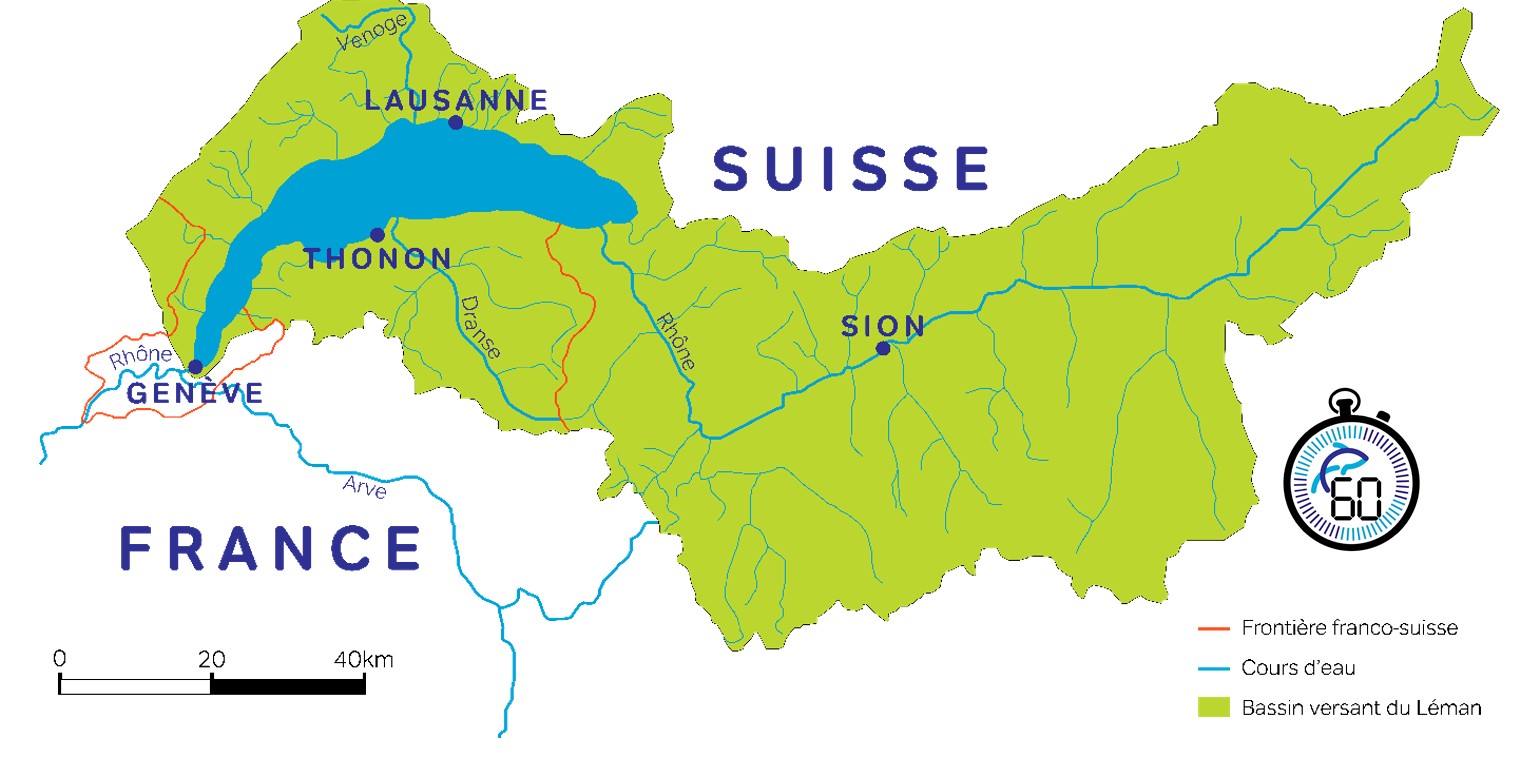The catchment area is a portion of land where all the water from rainfall converges towards a single outlet, called an outfall.
The Lake Geneva catchment area covers 7,975 km2, from the Rhône glacier upstream to the lake outlet at Geneva, and is bounded by natural boundaries such as mountain ridges, for example the Alps.
Part of the Swiss cantons of Valais, Fribourg, Vaud and Geneva, as well as the departments of Haute-Savoie and Ain, make up this basin. In the canton of Valais, for example, the Viège, which rises from two other rivers in the Zematt and Saas valleys, flows into the Rhône, which continues on to end up in Lake Geneva at Le Bouveret. In the Haute-Savoie department, the Dranse de l'Abondance rises near Châtel, flows into the Dranse and then into Lake Geneva, forming a delta at Thonon.
Each river has its own catchment area. The Lake Geneva catchment area therefore includes all the catchment areas of the 8,300 km of watercourses that feed it.




